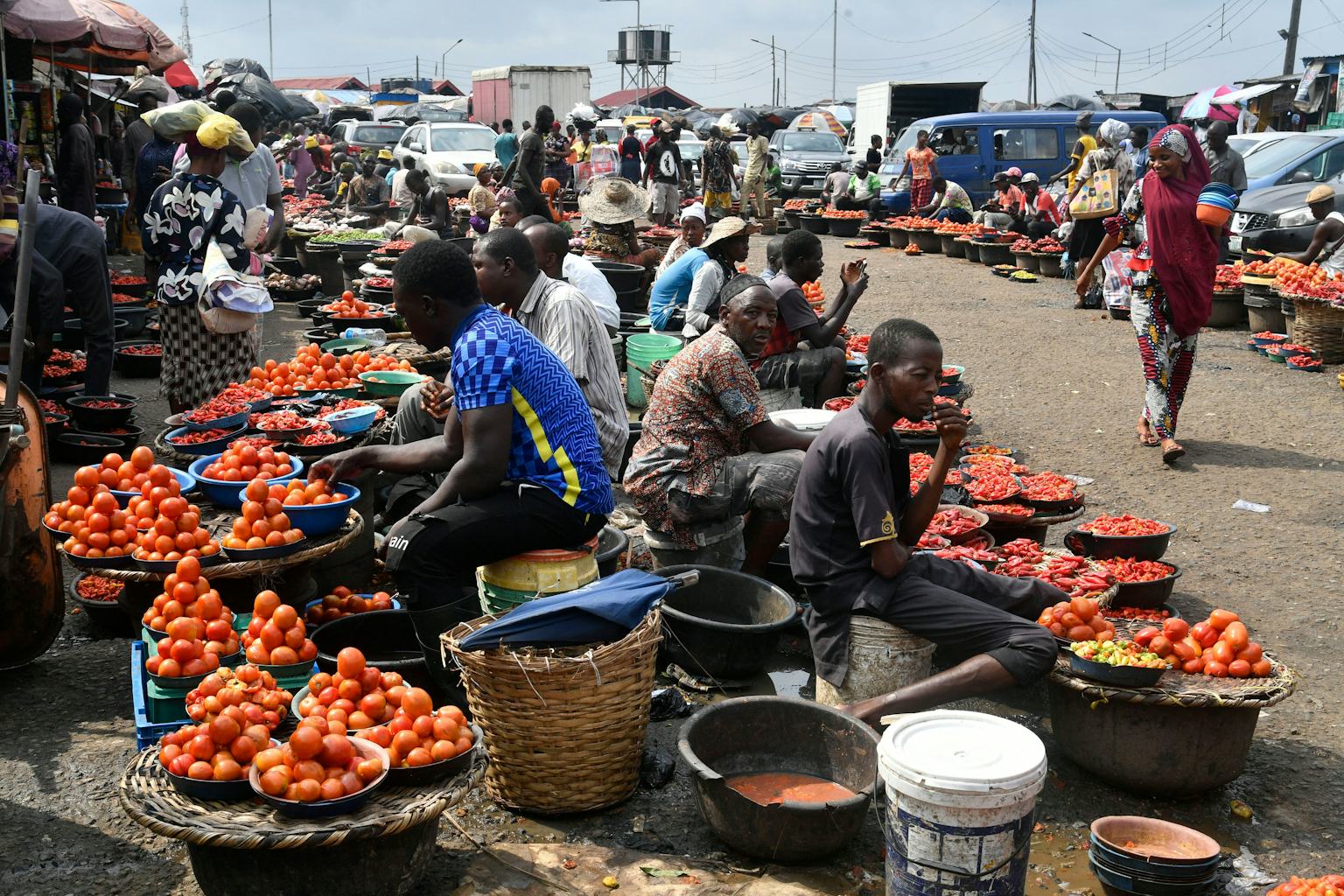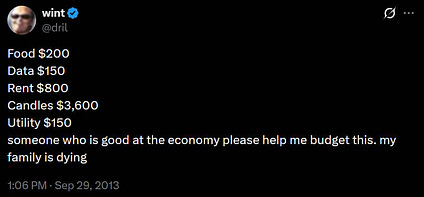One in two Nigerians live in poverty: why relief programmes have failed – The Conversation

Report on Systemic Failures in Nigerian Poverty Alleviation and Alignment with Sustainable Development Goals
Executive Summary
Recent data indicates a severe regression in Nigeria’s progress towards Sustainable Development Goal 1 (No Poverty). The national poverty rate has escalated from approximately 31% before the COVID-19 pandemic to an estimated 46% in 2024. This report analyzes the underlying governance failures that undermine national poverty alleviation programmes, despite their stated intentions. The findings reveal that persistent poverty is not due to a lack of initiatives but to systemic weaknesses in governance, which directly contravene the principles of SDG 16 (Peace, Justice, and Strong Institutions). The analysis identifies three primary factors: weak legislative accountability, pervasive political interference, and a lack of people-centred policy design. Addressing these institutional failures is critical for achieving SDG 1 and related development targets.
The State of Poverty in Nigeria: A Challenge to SDG 1
Nigeria faces a critical challenge in meeting its commitments to the 2030 Agenda, particularly SDG 1. The scale of deprivation is a significant barrier to national development.
- Poverty Rate: The poverty rate has increased to 46%, with an additional 42 million people falling into poverty since the COVID-19 pandemic.
- Multidimensional Poverty: Over 133 million Nigerians experience multidimensional poverty, indicating deprivation across multiple indicators beyond income, affecting progress on SDG 3 (Good Health and Well-being) and SDG 4 (Quality Education).
- Child Poverty: Children are disproportionately affected, with 67.5% of all children aged 0-17 living in poverty. They constitute 51% of Nigeria’s poor, jeopardizing the nation’s future human capital and its ability to achieve SDG 8 (Decent Work and Economic Growth).
Despite a history of government interventions, including the National Poverty Eradication Programme (2001), the Subsidy Reinvestment and Empowerment Programme (2012), and the National Social Investment Programme (2016), poverty levels have continued to rise, pointing to fundamental flaws in programme implementation and governance.
Analysis of Governance Deficiencies Hindering SDG Progress
The failure of poverty alleviation efforts is rooted in governance deficiencies that compromise the effectiveness and accountability of state institutions, directly impacting the achievement of SDG 16 (Peace, Justice, and Strong Institutions).
-
Weak Legislative Accountability
A primary institutional failure is the lack of effective legislative oversight. Parliamentary committees tasked with monitoring poverty programmes often lack the resources, independence, and political will to hold the executive accountable. This failure to enforce transparency and performance metrics, a core tenet of SDG 16.6 (develop effective, accountable and transparent institutions), allows for inefficiency and ensures that anti-poverty initiatives often become symbolic rather than impactful.
-
Political Interference and Corruption
Poverty alleviation programmes are frequently subverted for political purposes, serving as tools for patronage and electoral gain. This political capture leads to the misallocation of resources, benefiting political loyalists rather than the most vulnerable populations, thereby exacerbating inequality and undermining SDG 10 (Reduced Inequalities). Such practices are a direct violation of SDG 16.5 (substantially reduce corruption and bribery) and result in policy discontinuity, waste, and a profound lack of sustainable impact.
-
Absence of People-Centred Policy Design
Many poverty relief policies are designed using a top-down approach, failing to consult or involve the communities they are intended to serve. This contradicts the principle of SDG 16.7 (ensure responsive, inclusive, participatory and representative decision-making). Without the participation of beneficiaries in the design and monitoring phases, programmes remain disconnected from the realities of the poor and fail to address their most pressing needs, such as food security, healthcare, and education access.
Recommendations for Realigning with the Sustainable Development Goals
To reverse the current trend and make meaningful progress towards SDG 1, Nigeria must address these fundamental governance and accountability deficits. The following recommendations are aligned with strengthening institutions as outlined in SDG 16.
-
Strengthen Legislative Oversight and Institutional Accountability
The National Assembly must prioritize its oversight function by ensuring its committees are adequately resourced and supported by independent experts. Implementing regular, public reporting on programme funding and outcomes will enhance transparency and hold government agencies accountable, in line with the targets of SDG 16.
-
Depoliticize Poverty Alleviation and Combat Corruption
To ensure resources reach the intended beneficiaries, poverty alleviation agencies must be insulated from partisan control. Management should be entrusted to professionals and community representatives. Furthermore, anti-corruption bodies must be empowered to prosecute the diversion of funds and the capture of programmes by elite interests, reinforcing the commitment to SDG 16.5.
-
Adopt Inclusive, People-Centred Policy Frameworks
Future poverty relief policies must be co-designed with citizens. By ensuring communities are consulted before launch and that beneficiary feedback is integrated into monitoring and evaluation, programmes will become more relevant, accessible, and effective. This participatory approach is essential for achieving responsive governance under SDG 16.7 and for creating sustainable pathways out of poverty as envisioned in SDG 1.
Identified Sustainable Development Goals (SDGs)
SDG 1: No Poverty
- The article’s central theme is the critical level of poverty in Nigeria. It directly discusses the failure of poverty alleviation programs and the increasing poverty rates, which is the core focus of SDG 1. The text states, “Poverty in Nigeria has reached critical levels,” and mentions that the poverty rate increased to about 46% in 2024, with 133 million people living in multidimensional poverty.
SDG 16: Peace, Justice and Strong Institutions
- The article argues that the persistence of poverty is not due to a lack of programs but to “governance failures.” It identifies “weak legislative accountability,” “political interference,” and the absence of people-centered policy design as key problems. These issues directly relate to the goal of building effective, accountable, and inclusive institutions, which is the focus of SDG 16.
SDG 10: Reduced Inequalities
- The article implies a connection to SDG 10 by highlighting how political interference skews the benefits of poverty alleviation programs. It notes that “beneficiary lists are sometimes skewed towards ruling party loyalists rather than the poorest communities,” which exacerbates inequality by preventing aid from reaching those who need it most. The focus on child poverty, where “half of all poor Nigerians – 51% – are children,” also points to inequalities affecting specific vulnerable groups.
Specific Targets Identified
Targets under SDG 1: No Poverty
- Target 1.2: By 2030, reduce at least by half the proportion of men, women, and children of all ages living in poverty in all its dimensions according to national definitions. The article directly addresses this by citing that “133 million people are living in multidimensional poverty” and that “67.5% of children in Nigeria aged 0-17 are poor.”
- Target 1.3: Implement nationally appropriate social protection systems and measures for all. The article mentions several such systems, including the “National Poverty Eradication Programme,” the “Subsidy Reinvestment and Empowerment Programme,” and the “National Social Investment Programme,” but critically notes their failure to reduce poverty.
- Target 1.b: Create sound policy frameworks… based on pro-poor… development strategies. The article critiques the existing policy frameworks, stating that many are “top-down strategies” and lack “people-centred policy design,” directly contradicting the principles of this target.
Targets under SDG 16: Peace, Justice and Strong Institutions
- Target 16.5: Substantially reduce corruption and bribery in all their forms. The article points to issues of corruption and misallocation of resources, noting that programs are used to “expand patronage networks” and that anti-corruption bodies must act when “funds are diverted.”
- Target 16.6: Develop effective, accountable and transparent institutions at all levels. The analysis of “weak legislative accountability” and the call for “regular public reporting” to “hold agencies accountable for funds and outcomes” directly align with this target.
- Target 16.7: Ensure responsive, inclusive, participatory and representative decision-making at all levels. The article’s finding on the “absence of people-centred policy design” and its recommendation that “communities must be consulted before programmes are launched” directly address the need for inclusive and participatory decision-making.
Targets under SDG 10: Reduced Inequalities
- Target 10.2: By 2030, empower and promote the social, economic and political inclusion of all. The article highlights the exclusion of the poor from the policy-making process, stating that “beneficiaries are rarely consulted in the design or monitoring of programmes.” The political capture of these programs also works against the inclusion of those not aligned with the ruling party.
Indicators Mentioned or Implied
- Indicator 1.2.1: Proportion of population living below the national poverty line. The article explicitly provides data for this indicator, stating the poverty rate was “about 31% of Nigerians… prior to the COVID-19 epidemic” and has since increased to “about 46% in 2024.”
- Indicator 1.2.2: Proportion of men, women and children of all ages living in poverty in all its dimensions. The article provides specific figures related to this indicator: “133 million people are living in multidimensional poverty,” “67.5% of children in Nigeria aged 0-17 are poor,” and “half of all poor Nigerians – 51% – are children.”
- Qualitative Indicators for SDG 16: While not providing quantitative data, the article implies several qualitative indicators for institutional weakness (Target 16.6) and corruption (Target 16.5). These include:
- Lack of resources and independence for parliamentary oversight committees.
- Appointments to program boards based on political considerations instead of expertise.
- Diversion of funds and program capture by elite interests.
- Lack of public consultation in policy design.
Table of SDGs, Targets, and Indicators
| SDGs | Targets | Indicators |
|---|---|---|
| SDG 1: No Poverty | 1.2: Reduce poverty in all its dimensions. | 1.2.1: Proportion of population below the national poverty line (Stated as 46% in 2024). 1.2.2: Proportion of population living in multidimensional poverty (Stated as 133 million people; 67.5% of children). |
| SDG 1: No Poverty | 1.3: Implement social protection systems. | Mention of specific but failing programs like the National Social Investment Programme. |
| SDG 1: No Poverty | 1.b: Create pro-poor policy frameworks. | Critique of policies as “top-down” and not “people-centred.” |
| SDG 16: Peace, Justice and Strong Institutions | 16.5: Substantially reduce corruption. | Implied through mentions of “patronage networks,” “political capture,” and “funds are diverted.” |
| SDG 16: Peace, Justice and Strong Institutions | 16.6: Develop effective, accountable, transparent institutions. | Implied through the critique of “weak legislative accountability” and underfunded oversight committees. |
| SDG 16: Peace, Justice and Strong Institutions | 16.7: Ensure responsive, inclusive, and participatory decision-making. | Implied by the finding that “beneficiaries are rarely consulted in the design or monitoring of programmes.” |
| SDG 10: Reduced Inequalities | 10.2: Promote social, economic, and political inclusion. | Implied by the observation that beneficiary lists are “skewed towards ruling party loyalists rather than the poorest communities.” |
Source: theconversation.com
What is Your Reaction?
 Like
0
Like
0
 Dislike
0
Dislike
0
 Love
0
Love
0
 Funny
0
Funny
0
 Angry
0
Angry
0
 Sad
0
Sad
0
 Wow
0
Wow
0



















































.jpg.webp?itok=0ZsAnae9#)


























